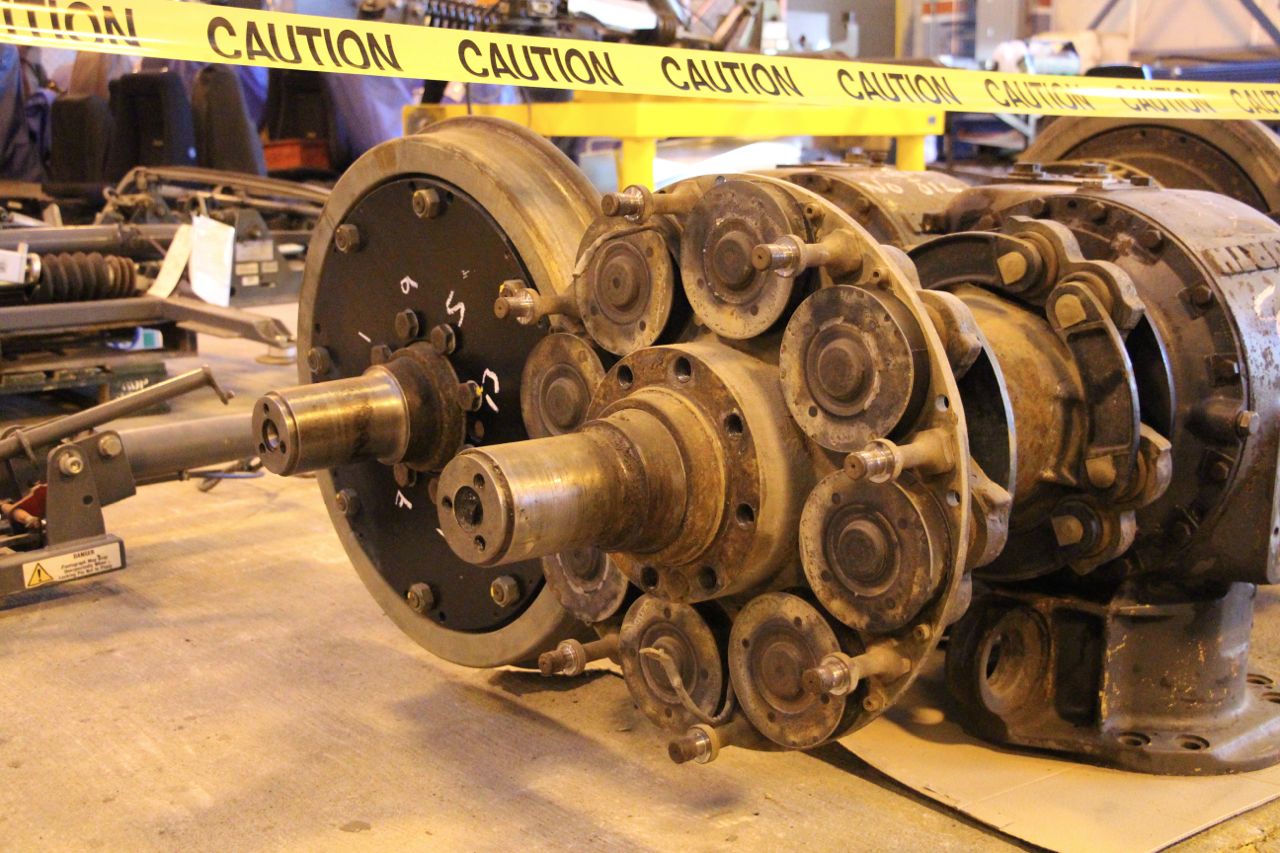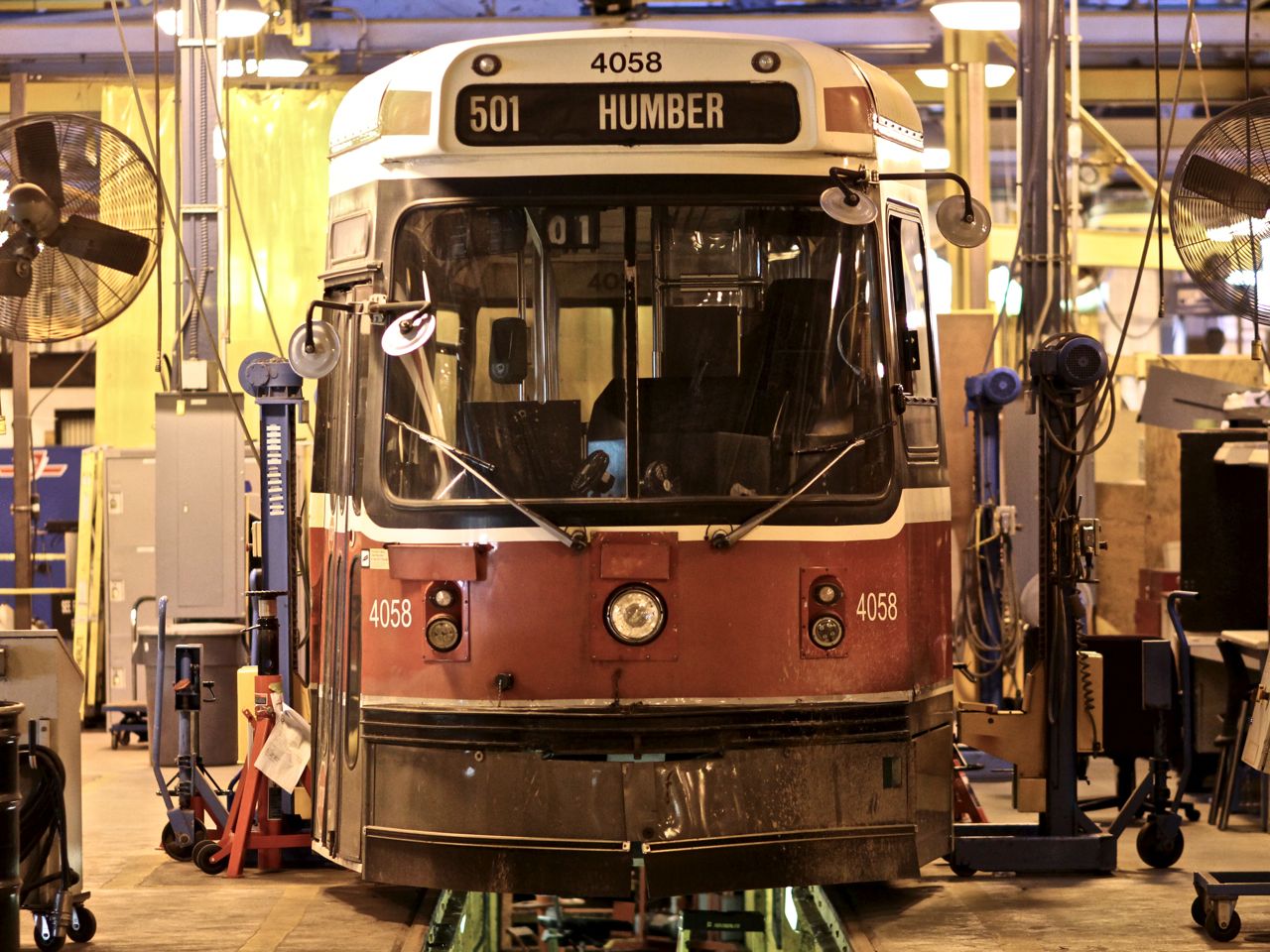Posts: 4,335
Threads: 1
Joined: May 2015
Reputation:
180
(08-12-2016, 07:55 PM)Canard Wrote: (08-12-2016, 12:26 PM)nms Wrote: The Ion agreement includes a refurbishment at the end of the agreement so we'll inherit a slightly used system as opposed to either a brand new system or a worn out system.
Cool, that's news to me! I assume that's buried away somewhere in the Project Agreement?
I'd wondered about this - with the lifespan of embedded track being somewhere around 20-30 years. I bit my tongue on bringing that up!
I’m a little concerned about that sort of issue too. Toronto went through that in the ’20s, I believe it was, when the franchise holder (is that the right word?) stopped maintenance near the end of their time, leading to the TTC inheriting a very rickety system.
However, I’m not too worried. Even if all the track was worthless, and the OCS in bad shape, re-creating all of that would cost a small fraction of what is being spent now. There would be no utility moves, no tree removal, no property acquisition, no road re-routing, and so on: just re-build the actual track structure itself, and replace the overhead.
Posts: 6,905
Threads: 32
Joined: Oct 2014
Reputation:
224
(08-13-2016, 06:53 AM)ijmorlan Wrote: However, I’m not too worried. Even if all the track was worthless, and the OCS in bad shape, re-creating all of that would cost a small fraction of what is being spent now. There would be no utility moves, no tree removal, no property acquisition, no road re-routing, and so on: just re-build the actual track structure itself, and replace the overhead.
That's kind of a big deal - that's the part that I was worried about. Over half of our system is embedded track - jackhammering out all that concrete to get the rails and temporary track ties out will be a massive job. But, if there's a refurbishment clause in the Project Agreement, we're all good!
The good part is that with any train system, it's the wheels that are the primary consumable wear item, and there are facilities and equipment in place at the OMSF to handle maintenance on them.
Back to Toronto - it's transit-related since it's over the tracks, but has anyone been following the Track Deck Park proposal/project?

Posts: 2,015
Threads: 11
Joined: Oct 2014
Reputation:
77
(08-13-2016, 06:53 AM)ijmorlan Wrote: However, I’m not too worried. Even if all the track was worthless, and the OCS in bad shape, re-creating all of that would cost a small fraction of what is being spent now. There would be no utility moves, no tree removal, no property acquisition, no road re-routing, and so on: just re-build the actual track structure itself, and replace the overhead.
Also, presumably if the consortium finds the DBFOM experience profitable enough for them they'll want to renew the contract and thus will have incentive to keep things in good shape right to the end of the 30 year contract. Both the maintenance (minor day to day things) and lifecycle (major capital refurbishment) costs are covered by the contract.
Everyone move to the back of the bus and we all get home faster.
Posts: 4,335
Threads: 1
Joined: May 2015
Reputation:
180
(08-13-2016, 07:35 AM)Canard Wrote: (08-13-2016, 06:53 AM)ijmorlan Wrote: However, I’m not too worried. Even if all the track was worthless, and the OCS in bad shape, re-creating all of that would cost a small fraction of what is being spent now. There would be no utility moves, no tree removal, no property acquisition, no road re-routing, and so on: just re-build the actual track structure itself, and replace the overhead.
That's kind of a big deal - that's the part that I was worried about. Over half of our system is embedded track - jackhammering out all that concrete to get the rails and temporary track ties out will be a massive job. But, if there's a refurbishment clause in the Project Agreement, we're all good!
Definitely a big job. I’m not sure if you know this, but Toronto’s current streetcar construction technique is quite different, involving three layers of concrete. The first is just a concrete slab. Then a concrete slab with Pandrol clips embedded in it. Then the tracks are installed and embedded within a third layer of concrete. Routine rail replacement can be done by jackhammering only the top layer, replacing the tracks, and pouring a new top layer.
One important difference however is the rubber boot all the way around the rail in our system. I’m hopeful that will make a big difference in longevity.
Posts: 2,003
Threads: 7
Joined: Sep 2014
Reputation:
124
I was wondering if the rubber boot would make a difference for cyclists. I haven't had a chance to take a close look at how it is installed.
Posts: 4,335
Threads: 1
Joined: May 2015
Reputation:
180
(08-13-2016, 03:27 PM)jamincan Wrote: I was wondering if the rubber boot would make a difference for cyclists. I haven't had a chance to take a close look at how it is installed.
On the outer side of the rail, there is a bit of rubber pretty well at the same level as the rail and concrete. On the inner side, it sits lower to give space for the wheel flange. I believe this space is temporarily filled with a filler strip when they pour the concrete although I'm not sure. Overall, my impression is that the embedded track is about as close to being flat pavement as possible given the need for a flangeway. As long as a bicycle crosses at no less than maybe a 60 degree angle, it should be a barely noticeable bump. It’s a bit hard to tell now because in few or no places is the surrounding road completely done, so there is usually a bump at the edge of the concrete or even an irregular surface near the concrete. But based on what I’ve observed so far, I think crossing over embedded tracks will be about as low impact as possible.
Posts: 6,905
Threads: 32
Joined: Oct 2014
Reputation:
224
08-13-2016, 07:01 PM
(This post was last modified: 08-13-2016, 07:02 PM by Canard.)
I have 700x35 tires (fairly narrow) and can cross without a problem at about ~20 degrees - quite shallow. The best technique is to just give a quick flick to the side and hold the handlebars firmly when doing so - maintaining control.
The rubber boot around the rail doesn't really have any impact on making it any worse or better for cyclists - there's still quite a decent gap there (especially where there is a restraining rail). It is also not there for longevity of the rail - it is there for the longevity of the concrete (to prevent cracking), and for vibration absorption (from the Project Agreement).
Posts: 2,003
Threads: 7
Joined: Sep 2014
Reputation:
124
Ah, I see. I wasn't sure if it came up level with the rail and then compressed under the wheel flange when trains went over. I suppose such a system might be possible but it would probably greatly increase the risk of derailment.
Posts: 7,591
Threads: 36
Joined: Jun 2016
Reputation:
196
(08-14-2016, 04:23 PM)jamincan Wrote: Ah, I see. I wasn't sure if it came up level with the rail and then compressed under the wheel flange when trains went over. I suppose such a system might be possible but it would probably greatly increase the risk of derailment.
Such a system is marked by a number of companies, all of whom claim that their system works just fine, no risk of derailment, no excessive maintenance issues. How it actually functions, I cannot say, but such a system was not adopted here.
Posts: 4,335
Threads: 1
Joined: May 2015
Reputation:
180
(08-14-2016, 07:42 PM)danbrotherston Wrote: (08-14-2016, 04:23 PM)jamincan Wrote: Ah, I see. I wasn't sure if it came up level with the rail and then compressed under the wheel flange when trains went over. I suppose such a system might be possible but it would probably greatly increase the risk of derailment.
Such a system is marked by a number of companies, all of whom claim that their system works just fine, no risk of derailment, no excessive maintenance issues. How it actually functions, I cannot say, but such a system was not adopted here.
I’d be pretty surprised if there was a risk of derailment. Remember that trains can squash pennies flat, so the force available to depress the filler strip without affecting the movement of the train is enormous. I’d be more concerned about maintenance and reliability in terms of always springing back properly so that bicycles have a safe surface.
Where I would have liked to see a system like this used is on the Spur Line between King St. and Regina. Just embed the track and pave the entire space flat with filler strips. Officially the trail would close during train operating hours (although in practice only when the train inches its way through the space) while at all other times the entire space between the buildings would be the path.
Obviously not an appropriate solution for the main line, but equally obviously perfectly safe in this particular context.
Posts: 6,905
Threads: 32
Joined: Oct 2014
Reputation:
224
Tomorrow, the Toronto Transit Commission is having an open house at their Harvey Shop facility at Hillcrest.
https://www.ttc.ca/Riding_the_TTC/Events..._House.jsp
Posts: 6,905
Threads: 32
Joined: Oct 2014
Reputation:
224
Here are some photos of the open house.

Motor rewinding area

Stator housing for the generator on an Orion Hybrid bus, after being rewound

A rotor for a motor is on a lathe having the commutator turned to expose new material.

Business end of a new CNC turning centre.

The teams are learning how to maintain the pantographs which the LFLRV's are equipped with. Once a particular line is completely converted over to LFLRV's (from CLRV/ALRV's), they can rework all the overhead contact system to accommodate the pantographs, and then the temporary-use trolley poles on the trains can be removed.
Posts: 6,905
Threads: 32
Joined: Oct 2014
Reputation:
224
09-24-2016, 09:43 PM
(This post was last modified: 09-24-2016, 09:45 PM by Canard.)

Pantograph close up.

A wheel assembly disassembled. I had long wondered what was inside of the wheels and as I suspected, there is actually an elastometric element sandwiched between the two wheel halves! This permits the "tire" to be isolated mechanically from the actual hub, which mitigates vibration. The device on the other side of the axle is a Cardan coupling, not a "Cardinal" coupling as the workers were telling people, but I wasn't about to correct them. 

A 40-year old CLRV undergoes refurbishment.

A pair of ALRV's undergoing refurbishment.

An LFLRV with its pantograph up in the yard.
Posts: 4,401
Threads: 15
Joined: Aug 2014
Reputation:
124
Thanks for the shots, and for providing an engineer's eye!
Posts: 6,905
Threads: 32
Joined: Oct 2014
Reputation:
224
|




